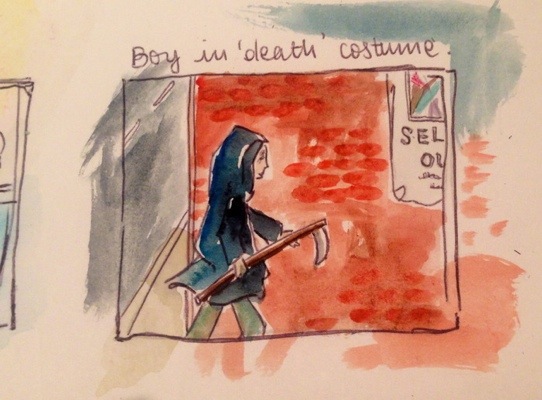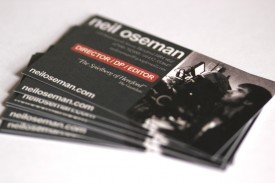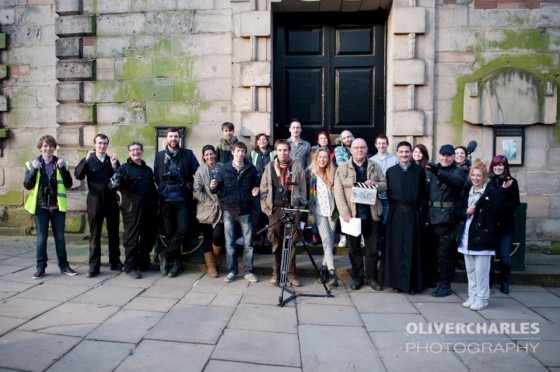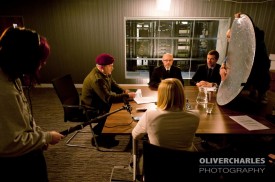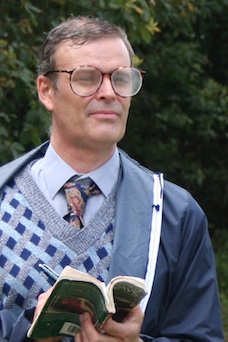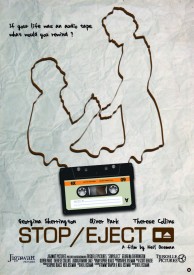
Where did the year go? It’s time for me to look at how my cinematic accomplishments in 2013 have measured up against the goals I set myself this time last year – which were:
In 2013 I definitely need to complete Stop/Eject and have a rough cut of my next short film by the end of the year, as well as entering Virgin Media Shorts again. I also want to have the Stop/Eject feature script at second draft stage and the beginnings of a package (actor attachments, outline budget and so on) by this time next year. I’d like to get at least one more feature script worked up as well. I want to get more directing gigs for other people, like SAS Couriers, and do more talks and screenings. It would be great to get Video8 into at least one more festival.
It starts off well. I did indeed complete Stop/Eject in June of this year. So far producer Sophie Black and I have entered it into fifteen of the world’s top film festivals. Four have turned it down, and the rest we wait to hear from. In 2014 I intend to enter it into at least the same number again.
I have long suspected that a much bigger-budget short, shot on 35mm with a name actor in the lead, would stand a far better chance of festival success. That was the “next short film” of which I spoke in my goals above. Accordingly I searched for and found a suitable writer back at the start of this year, and he duly penned a fantastic script. The issue, as always, was financing. At first I tried looking for producers, but no-one seemed to know how to raise serious dosh for an entirely uncommercial project, which is of course what a short film is. I had a faint hope that the BFI Shorts scheme would run again this year – offering up to £50,000 to produce a short – but instead we got iShorts, offering a paltry £5,000. (I teamed up with another writer and entered this scheme with much smaller scale stories, but we didn’t even make it to the first round.)
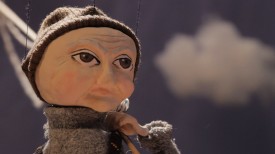
So right now I have no idea how to go forward with “the next short film”. A lot of people told me to just make a feature instead. Maybe they’re right.
Stop/Eject’s feature script hasn’t reached first draft stage yet, let alone second. Nor have I worked up another feature script. So a big fail there.
SAS Couriers fell through, but after some delays A Cautionary Tale is heading for a February 2014 shoot. That’s currently the only “directing gig for other people” I’m doing.
This year’s Virgin Media Shorts entry The One That Got Away was my strongest yet, thanks largely to the design and puppetry talents of Katie Lake, though it failed to make the shortlist. Nonetheless it’s screened at Worcestershire Film Festival and Roots to Shoots in Warwick, I’ve entered it into several international festivals, and lots of people have said nice things about it.
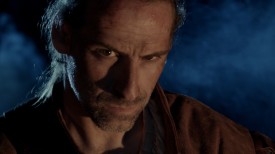
I gave a “making of Stop/Eject” talk at CEMRIAC back in March, and ran a workshop for Hereford’s BFI Film Academy at the Rural Media Company just the other week, but in general it’s been a quiet year for lecturing.
One area where I seem to have made big progress this year, perhaps as much by accident as by design, is in my cinematography work. Since January I’ve served as director on photography on Fled (48hr challenge short, Birmingham, dir. Brendan O’Neill), Girl and a Scar (experimental horror short, Tyne & Wear, dir. Dave Cave), The Deaths of John Smith (black comedy feature pilot, Warwickshire, dir. Roger Harding), 3 Blind Mice (short drama, Newbury, dir. KT Roberts), Droplets (music promo, Nottingham, dir. Tom Walsh) and The First Musketeer (action adventure web series, Lot – France, dir. Harriet Sams). This latter project, as I’ve previously enthused, was the best shoot I’ve ever worked on, was my first experience of DPing a period piece, and has led to some great friendships and professional connections. And I’ve learnt a huge amount too. It’s been great to be able to give so much back to the indie film scene this year. I hope it goes some way to repaying the karma of all the wonderful people who’ve worked for free on my own projects.
So, in 2014 I hope to work as DP for many more great directors, to complete A Cautionary Tale, to see Stop/Eject get into a significant festival, to enter Virgin Media Shorts again.
And beyond that, what do you think I should do? Should I try to get that mystery short off the ground? Push on with the Stop/Eject feature? Resurrect The Dark Side of the Earth? Or something else entirely? I am genuinely interested to know what people think, because I’m not at all sure what the best way to go is. (Please comment on my Facebook page. I’ve had to disable comments on this blog due to an obscene volume of spam.)
I’ll leave you with my top ten posts of the year.
- Poor Man’s Process. The really low-tech but incredibly effective way to fake driving scenes.
- Top Ten Crowd-funding Tips. The sum total of my experiences financing Stop/Eject condensed into ten invaluable nuggets of advice.
- Cannes 2013 Video Blogs. This year I accompanied Cannes virgin Sophie Black to the crazy Cote d’Azur film festival. Find out how the trip went and what her first impressions were.
- Making a Digital Cinema Package. Stepping you through the whole process from converting your film to a compliant frame rate and frame size to formatting the hard drive with the correct file system.
- How to be a Filmmaker. Ten tips for kickstarting your career in movie making.
- How to Speed Up Your Shoot. Single Developing Shots, down-the-line close-ups and deep two shots – do you know all the tricks to slash your re-lighting time?
- Depth Cues in Cinematography. Seven ways to make your 2D cinematography more three-dimensional.
- Know Your Lights. This video blog introduces some of the toys you get play with when you hire in a proper lighting package – including HMIs, kinoflos and dedos.
- Gaffering Basics. 13 amp sockets, 16 amp cabling and fuseboxes are just some of the topics covered in this introduction to the dark art of the lighting technician.
- How to Make a Fantasy Action Movie for £28,000. This 20 minute video breaks down how I financed my 2005 feature film Soul Searcher, exactly what the money was spent on and all the details of the distribution deal and revenue.
